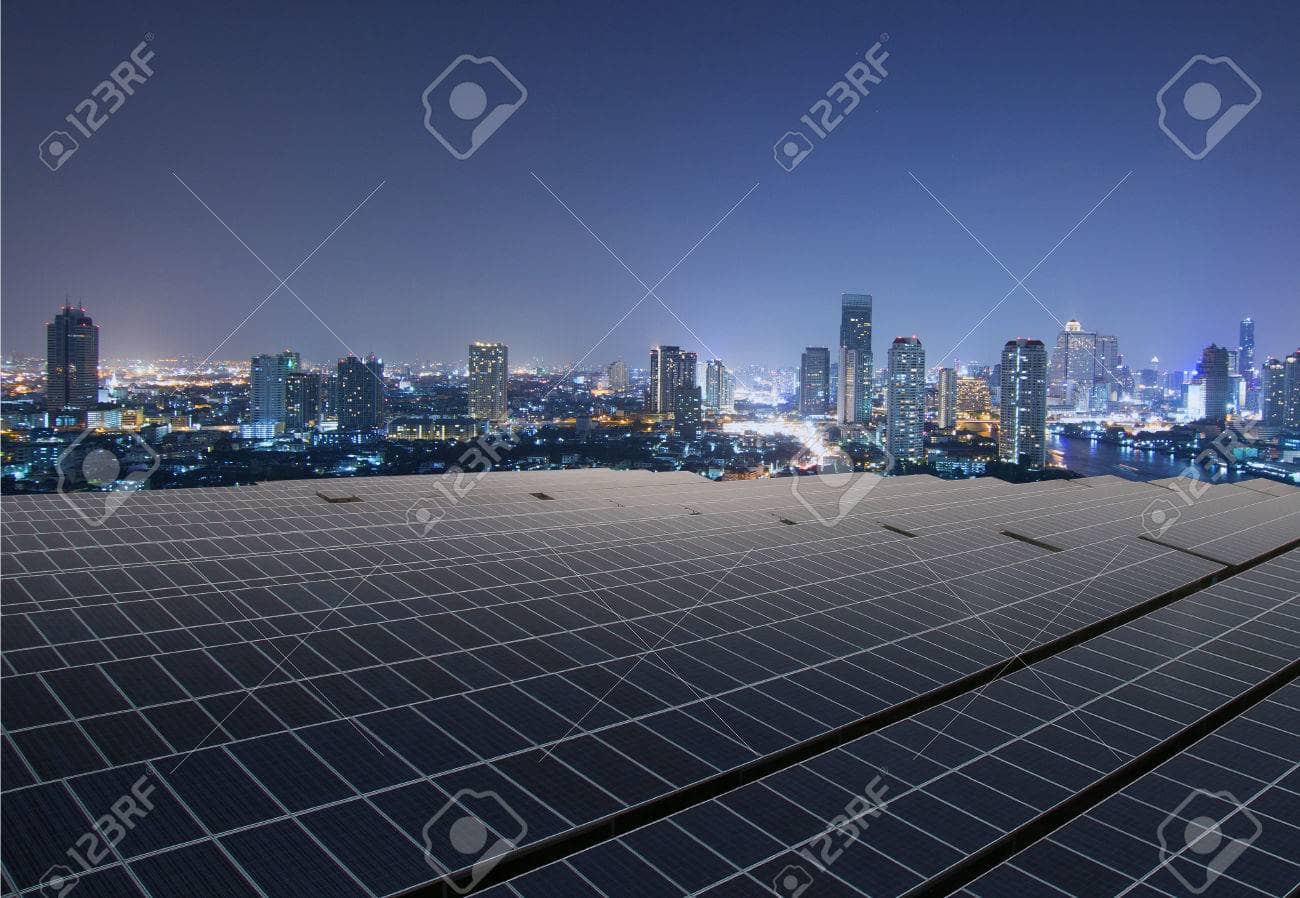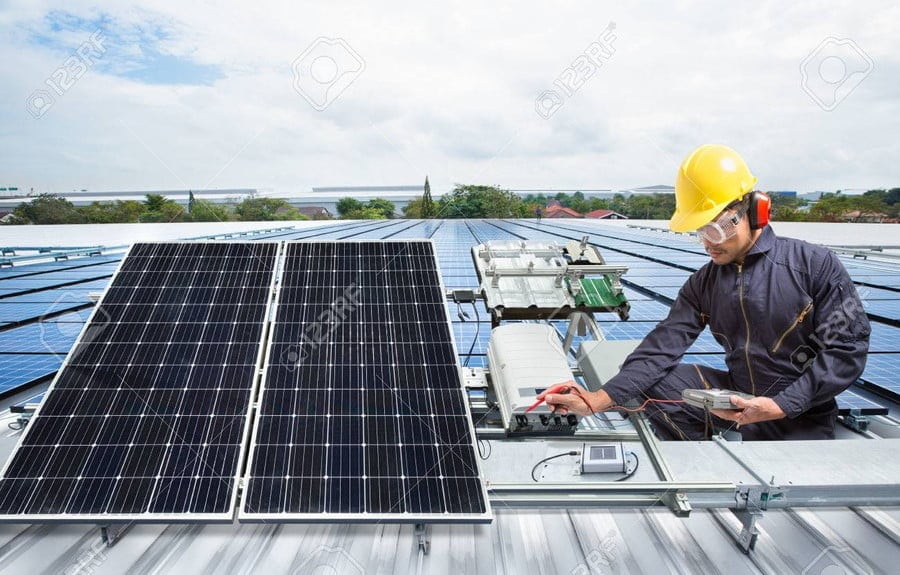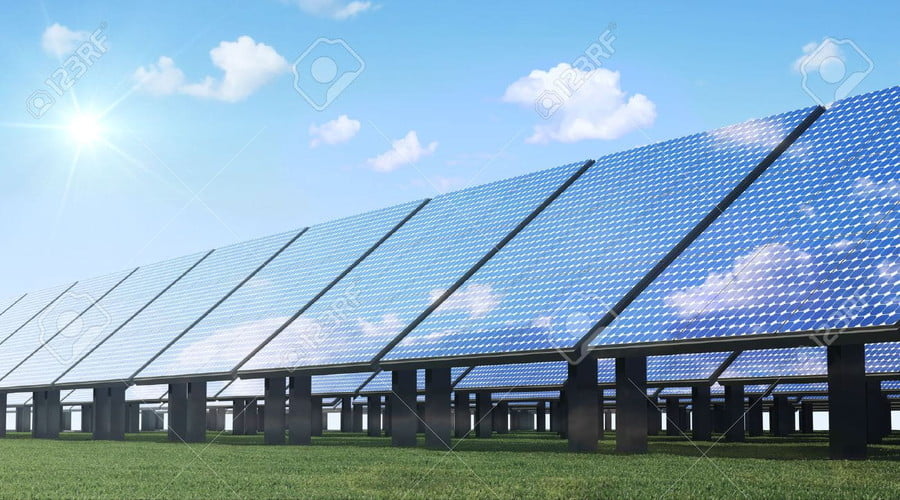พลังงานที่ถูกใช้รวมทั้งหมดในโลกจากการใช้รถยนต์ การขนส่ง และอุตสาหกรรม คิดเทียบเป็นอัตรากำลังไฟฟ้าเฉลี่ยประมาณ 16,000 GW4 ซึ่งเป็นปริมาณการใช้พลังงานจำนวนมหาศาลเลยทีเดียว ดังนั้น เพื่อลดการปล่อยมลภาวะต่อสิ่งแวดล้อมของการใช้พลังงานฟอสซิล การหาแหล่งพลังงานทดแทนต่างๆที่เป็นมิตรต่อสิ่งแวดล้อมมาใช้จึงเป็นสิ่งจำเป็น พลังงานแสงอาทิตย์เป็นแหล่งพลังงานที่มีศักยภาพอย่างเหลือเฟือเมื่อเทียบกับความต้องการของการใช้งาน ถ้าคิดประสิทธิภาพของเทคโนโลยีเซลล์แสงอาทิตย์ที่ 10 % และใช้พื้นที่รับแสงอาทิตย์เพียงแค่ 1 – 2 % ของพื้นผิวโลก ก็จะได้ปริมาณพลังงานหลายเท่าตัวของพลังงานที่ต้องการ
เนื่องจากเทคโนโลยีของเซลล์แสงอาทิตย์ที่แพร่หลายในปัจจุบันจะเป็นเซลล์แสงอาทิตย์แบบทึบแสงที่ผลิตจากสารกึ่งตัวนำประเภทซิลิคอน ปัญหาสำคัญในการติดตั้งแผงโซล่าเซลล์ที่เป็นแบบทึบแสงเพื่อผลิตพลังงานไฟฟ้านั้น คือพื้นที่ที่ใช้ในการติดตั้งแผงเซลล์แสงอาทิตย์ เพราะพื้นที่ในการติดตั้งแผงเซลล์แสงอาทิตย์จะต้องเป็นพื้นที่โล่งขนาดใหญ่ เช่น การติดตั้งแผงเซลล์แสงอาทิตย์บนพื้นดิน (solar farm) หรือการติดตั้งแผงเซลล์แสงอาทิตย์บนหลังคา (solar rooftop) ซึ่งการติดตั้งแผงเซลล์แสงอาทิตย์บนพื้นดินหรือโซล่าฟาร์มนั้น ตำแหน่งการติดตั้งส่วนใหญ่มักจะอยู่ห่างไกลจากแหล่งของการใช้พลังงานทำให้เกิดความสูญเสียในการส่งจ่ายพลังงาน นอกจากนั้นการติดตั้งโซล่าฟาร์มอาจเป็นการเบียดเบียนการใช้ประโยชน์ของที่ดินทางด้านเกษตรกรรมหรือพื้นที่ป่าอีกด้วย ส่วนการติดตั้งแผงเซลล์แสงอาทิตย์บนหลังคานั้นก็เป็นการใช้ประโยชน์จากพื้นผิวอาคารบ้านเรือนได้ไม่เต็มที่

เทคโนโลยีเซลล์แสงอาทิตย์แบบโปร่งใสซึ่งสามารถประยุกต์ใช้กับผลิตภัณฑ์กระจกได้ทุกชนิด จึงเป็นเทคโนโลยีที่หลุดกรอบข้อจำกัดด้านพื้นที่ติดตั้งของเซลล์แสงอาทิตย์แบบเดิม เซลล์แสงอาทิตย์แบบโปร่งใสสามารถติดตั้งกับกระจกอาคาร กระจกรถยนต์ หน้าจอมือถือสมาร์ทโฟน แทบเล็ต หรือนาฬิกาได้ ถ้าอาคารสูงต่างๆในเมืองใหญ่ มีการติดตั้งเซลล์แสงอาทิตย์แบบโปร่งใสบนพื้นผิวกระจกทั้งหมดของอาคาร ก็จะทำให้อาคารนั้นกลายเป็นโรงผลิตไฟฟ้าขนาดย่อมเลยทีเดียว ซึ่งสามารถนำไฟฟ้าที่ผลิตได้ไปใช้ภายในอาคารเองหรือแบ่งปันส่งเข้าระบบสายส่งได้กรณีที่เหลือใช้ กระแสไฟฟ้าที่ผลิตได้จากกระจกรถยนต์ที่เป็นเซลล์แสงอาทิตย์แบบโปร่งใสก็สามารถนำไปใช้แบ่งเบาภาระของต้นกำลังรถยนต์ได้ ซึ่งอาจทำให้ช่วยเพิ่มระยะการใช้งานขึ้นได้อีกหลายกิโลเมตร เซลล์แสงอาทิตย์แบบโปร่งใสบนหน้าจอจะทำให้เราใช้อุปกรณ์มือถือสมาร์ทโฟน แทบเล็ต หรือนาฬิกาได้นานขึ้นในระหว่างวัน และสำหรับผลกระทบของโซล่าฟาร์มที่มีต่อพื้นที่เกษตรกรรมนั้น เราก็สามารถประยุกต์เซลล์แสงอาทิตย์แบบโปร่งใสทำเป็นโรงเรือนเพื่อเพาะปลูกพืชได้ด้วยเช่นกัน เซลล์แสงอาทิตย์แบบโปร่งใสเป็นเทคโนโลยีการเคลือบติดผิวกระจกด้วยสารย้อมไวแสงที่มีคุณสมบัติกักเก็บพลังงานแสงอาทิตย์ในช่วงแสงที่ตามนุษย์มองไม่เห็น(อัลตราไวโอเลตและอินฟาเรด)ไว้เพื่อผลิตไฟฟ้า และปล่อยให้แสงช่วงที่มนุษย์มองเห็นสามารถผ่านไปได้ (ดังแสดงในรูปที่ 1) จึงทำให้เซลล์แสงอาทิตย์แบบโปร่งใสทำหน้าที่เป็นทั้งกระจกหน้าต่างและโซ่ลาเซลล์ผลิตไฟฟ้าได้ในเวลาเดียวกัน

เทคโนโลยีเซลล์แสงอาทิตย์แบบโปร่งใสแบ่งได้ 2 แบบหลักๆ ได้แก่ แบบไม่เลือกความยาวคลื่น (non-wavelength selective) ที่จะมีการดูดซับแสงอาทิตย์เกือบทุกช่วงของแสงทำให้มีค่าเฉลี่ยการส่งผ่านแสงที่มองเห็น (average visible transmission, AVT)ได้ไม่เกิน 50% หรือ แบบเลือกความยาวคลื่น (wavelength selective) ที่กำหนดให้มีการดูดซับแสงอาทิตย์เฉพาะช่วงขแงแสงที่ต้องการได้ ซึ่งจะมีค่า AVT ที่ประมาณ 50 – 90%
ตารางที่ 1 เป็นผลสรุปคุณสมบัติของเซลล์แสงอาทิตย์แบบโปร่งใสบนพื้นฐานการผลิตแบบต่างๆ เช่น การพิมพ์เคลือบฉาบหน้าเซลล์แสงอาทิตย์แบบย้อมไวแสง (Screen printing Dye-Sensitized Solar Cells; DSSC), การชุบด้วยไฟฟ้า (Electrophoretic Technique) และการจุ่มเคลือบ (Dip-coater) ซึ่งเป็นแบบไม่เลือกความยาวคลื่น ทำโดยการเคลือบฟิล์มบางของสารไททาเนียมไดออกไซด์ (titanium dioxide; TiO2) บนกระจกแบบดีบุกออกไซด์เจือด้วยฟลูออรีน/ดีบุกออกไซด์เจืออินเดียม (Fluorine doped tin oxide/Indium-doped tin oxide; FTO/ITO) วิธีการพิมพ์เคลือบฉาบหน้านี้จะมีการควบคุมความโปร่งใสโดยการออกแบบความละเอียดของพื้นผิว สำหรับการผลิตเซลล์แสงอาทิตย์แบบโปร่งใสที่เลือกความยาวคลื่นนั้นจะมีประสิทธิภาพที่ต่ำกว่า เช่น เซลล์แสงอาทิตย์ชนิดดูดซับช่วงแสงอัลตราไวโอเลตและช่วงแสงใกล้อินฟาเรด (near-infared OPV) เซลล์แสงอาทิตย์แบบรวมแสงโดยใช้สารเรืองแสง (TLSC) เซลล์แสงอาทิตย์โพลิเมอร์ที่มีโครงสร้างประกอบด้วยวัสดุคอมโพสิตระหว่างโพลีเมอร์กักช่วงแสงใกล้อินฟาเรดและฟูลเลอรีน (PCBM) ส่วนเซลล์แสงอาทิตย์กึ่งโปร่งใสที่เหมาะสำหรับการใช้งานที่ไม่ต้องการความโปร่งใสมากนัก ได้แก่ เซลล์แสงอาทิตย์กึ่งโปร่งใสควอนตัมดอท (Quantum Dot Solar cell) เซลล์แสงอาทิตย์ที่ผลิตจากวัสดุผสมระหว่างตะกั่วหรือดีบุกกับเฮไลด์ (Perovskite) และเซลล์แสงอาทิตย์เพอรอฟสไกต์ซ้อนกึ่งโปร่งใส (Tandem Semi-transparent Perovskite)
ตารางที่ 1 การเปรียบเทียบเซลล์แสงอาทิตย์แบบโปร่งใสบนพื้นฐานของกระบวนการผลิตที่ต่างกัน1

ถึงแม้เซลล์แสงอาทิตย์แบบโปร่งใสจะได้ผ่านข้อจำกัดของเซลล์แสงอาทิตย์แบบเดิมที่เป็นแบบทึบแสงในเรื่องของพื้นที่ของการติดตั้ง แต่ประสิทธิภาพการใช้งานจริงที่ยังต่ำมาก จึงเป็นปัจจัยสำคัญที่ยังคงไม่สามารถนำเซลล์แสงอาทิตย์แบบโปร่งใสมาใช้จริงในเชิงพาณิชย์ได้ ประมาณร้อยละ 80 ของเทคโนโลยีเซลล์แสงอาทิตย์แบบโปร่งใสยังคงอยู่ในขั้นตอนของการพัฒนาและต้องการการพัฒนาปรับปรุงให้มีความเหมาะสมในเชิงพาณิชย์ต่อไป ดังเช่นกลุ่มผู้ประดิษฐ์ที่ริเริ่มธุรกิจด้านนี้ ซึ่งได้แก่ Brite Solar –ได้มีการพัฒนาเซลล์แสงอาทิตย์แบบกระจกกึ่งโปร่งใสเพื่อมุ่งเน้นสำหรับโรงเรือนเพาะปลูก Onyx Solar – ได้มีการพัฒนาเซลล์แสงอาทิตย์แบบกระจกในเชิงสถาปัตย์สำหรับการตกแต่งอาคารซึ่งสามารถเลือกสีและเปอร์เซ็นความโปร่งใสได้ Physee – ได้ออกแบบกระจกหน้าต่างที่ติดตั้งเซลล์แสงอาทิตย์แบบดั้งเดิมไว้บริเวณขอบกระจกซึ่งสามารถใช้ชาร์จอุปกณ์ผ่านช่อง USB และมีแอพพลิเคชั่นที่สามารถแสงสภาพอากาศภายนอกได้ และUbiquitous Energy – ก่อตั้งโดยนักวิจัยที่จบจาก MIT มีการมุ่งเน้นการวิจัยและพัฒนาเทคโนโลยีเซลล์แสงอาทิตย์แบบโปร่งใสที่เป็นแผ่นฟิล์มบางใสสำหรับใช้เคลือบติดแผ่นกระจก ซึ่งเป็นผลการวิจัยที่คาดว่าจะพร้อมสำหรับการใช้งานได้ในอุปกรณ์ขนาดเล็ก เช่นอุปกรณ์อิเล็กทรอนิกส์ในอีก 5 ปีข้างหน้า2 โดยตอนนี้สามารถผลิตต้นแบบเซลล์แสงอาทิตย์แบบโปร่งใสที่เป็นแผ่นฟิล์มเคลือบติดแผ่นกระจกที่มีความหนาน้อยกว่า 1 ไมโครเมตร และมีประสิทธิภาพถึง 10% ที่ระดับความโปร่งใส 90%3

Pachern Jansa (Asst.Prof.) – School of Engineering, Sripatum University
1 Alaa A.F. Husain et. all “A review of transparent solar photovoltaic technologies”. Renewable and Sustainable Energy Reviews vol.94 (2018) pp.779–791
2 Edgar A. Gunther “Making PV transparent: The ultimate BIPV solution?”. Retrieved from: https://www.pv-tech.org/editors-blog/making-pv-transparent-the-ultimate-bipv-solution
3 Mona Bushnell “How Transparent Solar Panels Affect Construction Companies”. (2018) Retrieved from: https://www.business.com/articles/transparent-solar-windows-construction/
4 Richard Lunt “See-Through Solar Harvesting Surfaces”. (2015) Retrieved from: https://www.youtube.com/watch?v=5Vx59VLc98E&t=113s















